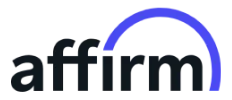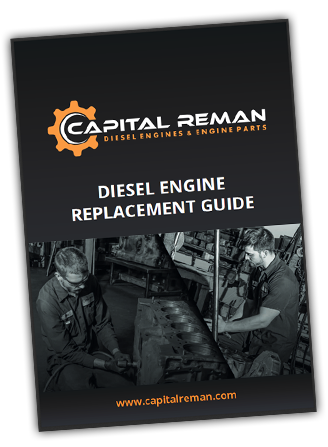CAT C7 Specs and Engine History
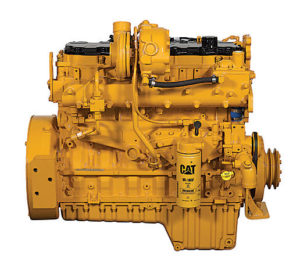 At the turn of the century there was a lot of buzz around a new diesel engine being produced at Caterpillar, one that could meet the growing emissions requirements enacted by the EPA. The Caterpillar C7 Engine was supposed to be the “golden child” in Caterpillar diesel engine lineup; one that combined raw horsepower with computer controlled clean emissions. However, sometimes things don’t go according to plan. The engine was produced from 2003 to 2009 and was installed primarily in over the road medium duty class 8 trucks. All of the big players in the trucking industry hopped on board hoping the CAT C7 was going to live up to the hype. Paccar, Freightliner, Ford and GMC all purchased the engine in droves. The technical classification of a medium duty tuck is a single drive axel with a gross vehicle weight of 18,000-33,000 lbs.; mostly box tucks, tow trucks, daycabs, and straight trucks.
At the turn of the century there was a lot of buzz around a new diesel engine being produced at Caterpillar, one that could meet the growing emissions requirements enacted by the EPA. The Caterpillar C7 Engine was supposed to be the “golden child” in Caterpillar diesel engine lineup; one that combined raw horsepower with computer controlled clean emissions. However, sometimes things don’t go according to plan. The engine was produced from 2003 to 2009 and was installed primarily in over the road medium duty class 8 trucks. All of the big players in the trucking industry hopped on board hoping the CAT C7 was going to live up to the hype. Paccar, Freightliner, Ford and GMC all purchased the engine in droves. The technical classification of a medium duty tuck is a single drive axel with a gross vehicle weight of 18,000-33,000 lbs.; mostly box tucks, tow trucks, daycabs, and straight trucks.
The Caterpillar C7 was designed mostly out of necessity vs. practicality. Caterpillar, needed to produce a new engine that was going to meet or exceed the Tier Ratings enacted by the EPA in 1994 to curb diesel engine emissions. The stricter Tier 4 emissions requirements went into effect January 1, 2004. The Caterpillar C7 was released in 2003, only months ahead of the Tier 4 ratings change, and replaced the popular 3126 model. Older CAT engines like the 3116 or 3126 were essentially grandfathered into the older tier rating requirements and did not need to be upgraded.
CAT C7 Commonalities With CAT 3126
The CAT C7 shares many common configurations with the CAT 3126. The engine configuration was the same as the 3126 but the fuel system changed using a new engineered style known as the HEUI injector. The HEUI injector allows for multiple injections at different metered rates. Using a staged fuel distribution ratio helps improve engine combustion which ultimately reduces emissions ouput. The electronic configuration was also more robust to offer better fuel management and electronic sensors into the engine. The CAT C7 was really the first heavy duty diesel engine to offer a greatly expanded ECM or electronic computer module. The ECM is the same hardware as previous electronic engine generations just upgraded to handle more systems. Using an advanced 120 pin connection the amount of 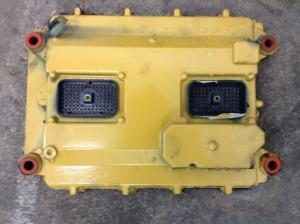 information the computer was able to process was astronomical. Other similarities between the CAT 3126 and CAT C7 include the same bore and stroke at 4.330 and 5.000 respectively. The cylinder heads are slightly different in the common rail design, still 3 valves per cylinder but there is no oil rail cast in the CAT C7 cylinder head.
information the computer was able to process was astronomical. Other similarities between the CAT 3126 and CAT C7 include the same bore and stroke at 4.330 and 5.000 respectively. The cylinder heads are slightly different in the common rail design, still 3 valves per cylinder but there is no oil rail cast in the CAT C7 cylinder head.
The most noticeable difference between the CAT 3126 and CAT C7 is within the valve train. The front gear train is mostly the same except for the gears which have fewer teeth and a more robust design. Some speculate that the reason for the wider gear teeth is so that the gear designs can’t be interchanged with older CAT 3126 and CAT 3116 versions. The oil pump and water pump are also larger to accommodate the need to lubricate/cool more moving parts.
When examining the crankshaft and rods the common differences between the CAT 3126 and the CAT C7 include smaller crankshaft counterweights to include the lighter weight piston design. The connecting rods and crankshaft share the same journal sizes but are slight different in terms of cast size and shape. The connecting rods in the Caterpillar C7 ACERT are not forged, liked the CAT 3126, but consist of powdered metal with a fractured cap design. There are also various sizes and configuration of the connecting rods depending on the piston used in the engine.
Horsepower is the determining factor when choosing the piston configuration in the CAT C7. The two options include a taller aluminum piston with a 1.811 wrist pin for 230 hp and higher versions and a shorter 1.52 diameter one piece steel piston for engine configurations below 210 hp.
CAT C7 ACERT Technology
 The CAT C7 includes the ACERT technology which is an air/fuel management system to control NOx emissions regulations. ACERT stands for “Advanced Combustion Emissions Reduction Technology”. Highlights of the ACERT technology include a closed crankcase breather and diesel particulate filter using CAT’s engineered regeneration technology. With the upgraded ECM the technology allows for a more precise control over the combustion cycle by monitoring the incoming air and fuel as well as the exhaust after treatment.
The CAT C7 includes the ACERT technology which is an air/fuel management system to control NOx emissions regulations. ACERT stands for “Advanced Combustion Emissions Reduction Technology”. Highlights of the ACERT technology include a closed crankcase breather and diesel particulate filter using CAT’s engineered regeneration technology. With the upgraded ECM the technology allows for a more precise control over the combustion cycle by monitoring the incoming air and fuel as well as the exhaust after treatment.
With the ACERT design the smaller CAT C7 models used an air inlet system with multiple traditional wastegated turbos to boost air intake flow and pressure. The more midsized hp models used only a single turbo while the larger horsepower models used dual turbochargers working in conjunction for optimal airflow. Within the design of the C7, the turbos use variable geometry valve actuation controlled by the ECM to adjust the perfect amount of airflow into the combustion chamber. This variable valve actuation also allows for the CAT C7 to offer an integral jake brake on two of the heavy duty diesel horsepower models.
The fuel delivery system on the CAT C7 is hydraulic electronically controlled unit injectors for the mid horsepower models and mechanically actuated and electronically controlled on the higher horsepower models. Both systems are metered and timed to inject multiple bursts of fuel to create a more efficient combustion cycle.
Lastly, the ACERT technology offers an exhaust after-treatment. The after-treatment technology reduces NOx particulate matter in the muffler via a spray of an oxidation catalyst agent. The after-treatment function is fairly straightforward and requires no additional cleaning or maintenance. Later ACERT technology on the CAT C13 and CAT C15 incorporated more advanced Selective Catalytic Reduction (SCR) technology, Exhaust Gas Recirculation (EGR), Diesel Exhaust Fluid and more robust Diesel Particulate Filters.
CAT C7 ACERT Problems
 With diesel engine technology there are two rating systems to determine the average life expectancy of the engine: B10 and B50. B10 is the average life expectancy of an engine measured in miles where 10% of the produced engines failed and needed a major overhaul. Consequently, B50 is the average miles where 50% of the engines failed. With the CAT C7 the B50 rating of 450,000-500,000 miles. This means half of the CAT C7 engines had a major engine failure at 500,000 miles and needed an overhaul. According to the B Rating System an “overhaul” or “major engine repair” is regarded as removal of the cylinder heads and/or dropping the oil pan with an inframe repair. Failures or parts replacement without removing the cylinder heads or dropping the oil pan are not counted in the B10 and B50 engine life statistics. This failure rate for the C7 isn’t terrible in relation to other diesel engines. For example the B50 rating for the popular Cummins 5.9 engine is only 350,000 miles. However, a Detroit Diesel 60 Series can easily go 1,000,000 miles before overhaul.
With diesel engine technology there are two rating systems to determine the average life expectancy of the engine: B10 and B50. B10 is the average life expectancy of an engine measured in miles where 10% of the produced engines failed and needed a major overhaul. Consequently, B50 is the average miles where 50% of the engines failed. With the CAT C7 the B50 rating of 450,000-500,000 miles. This means half of the CAT C7 engines had a major engine failure at 500,000 miles and needed an overhaul. According to the B Rating System an “overhaul” or “major engine repair” is regarded as removal of the cylinder heads and/or dropping the oil pan with an inframe repair. Failures or parts replacement without removing the cylinder heads or dropping the oil pan are not counted in the B10 and B50 engine life statistics. This failure rate for the C7 isn’t terrible in relation to other diesel engines. For example the B50 rating for the popular Cummins 5.9 engine is only 350,000 miles. However, a Detroit Diesel 60 Series can easily go 1,000,000 miles before overhaul.
The ACERT Technology had a lot of problems for Caterpillar, first with the CAT C7 but more so later on with the CAT 13 and CAT 15 engines. The technology was really the first generation emissions technology for heavy duty diesel engines. The ACERT technology was prone to numerous regeneration issues. Drivers reported low power and low fuel economy. It was common that the CAT C7 ACERT engines would experience overheating when driving up an incline. The cooling fan does not kick in until 235 degrees Fahrenheit while many drivers reported overheating at 200 degrees Fahrenheit. The engines run hotter to burn off more diesel particulate matter. Drivers are instructed to downshift to 1100 rpm when going up an incline to avoid overheating. Other issues regarding the CAT C7 ACERT technology is clogged diesel particulate filters as well as clogging of the inlet of the turbocharger. The ACERT technology was not well regarded due to its numerous issues with maintenance, fuel economy, and lowered horsepower. The company stopped producing over-the-road engines at the end of 2009 and elected not to meet the stricter 2010 emissions requirements by the EPA.
The original Caterpillar C7 would change configurations once again in 2007 to adjust to changing market demands. In 2007 diesel fuel itself changed to Ultra Low Sulfur Diesel or ULSD. The fuel change dictated that the fuel system of the CAT C7 ACERT needed to change to a common-rail injection system. The new common-rail injectors took injection pressures to 25,000-27,500 psi. The fuel transfer pump supplies the fuel to the fuel rail at 280 psi. Overall, the common rail system worked well but added another system or point of failure within the CAT C7 Engine.
Ultra Low Sulfur Diesel is thinner which means the fluid is vicious. Since the lubricity is lower this equates to better fuel circulation at a high pressure to keep the heat levels down. In the later 2007 models the turbocharger was also upgraded to variable nozzle technology which can offer appropriate boosts of horsepower at all engine rpms.
C7 Dimensions and Operating Capabilities
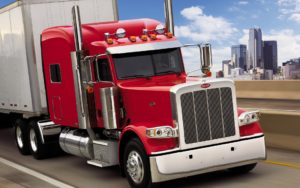 The Caterpillar C7 engine is an line 6 cylinder diesel fueled engine with a displacement of 7.2 liters. The maximum heavy duty hp dry weight is 1,425 lbs., with an oil capacity of 4.75 gallons or 6.75 gallons with the deeper sump pump and oil pan. The cooling system and water pump allow up to 3.99 gallons. The CAT C7 was available in 8 different horsepower ratings from 210 hp – 360 hp with torque ratings from 520-925 lb-ft of torque. The 330 hp and 360 hp models were only available in recreation vehicles and firefighting equipment. The first Caterpillar C7 models (210, 230 and 250 hp) were available in both low or high torque options. The torque options allowed for different transmission applications preferred by the various big truck manufacturers. Each manufacturer’s torque capacity was different and had to be matched with the CAT C7 of choice.
The Caterpillar C7 engine is an line 6 cylinder diesel fueled engine with a displacement of 7.2 liters. The maximum heavy duty hp dry weight is 1,425 lbs., with an oil capacity of 4.75 gallons or 6.75 gallons with the deeper sump pump and oil pan. The cooling system and water pump allow up to 3.99 gallons. The CAT C7 was available in 8 different horsepower ratings from 210 hp – 360 hp with torque ratings from 520-925 lb-ft of torque. The 330 hp and 360 hp models were only available in recreation vehicles and firefighting equipment. The first Caterpillar C7 models (210, 230 and 250 hp) were available in both low or high torque options. The torque options allowed for different transmission applications preferred by the various big truck manufacturers. Each manufacturer’s torque capacity was different and had to be matched with the CAT C7 of choice.
Overall the CAT C7 ACERT Engine represents the beginning of the end for Caterpillar’s long rein with over-the-road diesel engines. The company ultimately didn’t feel the cost of continuously producing emissions upgrades was worth the time and effort and exited the over the road industry in 2010 paving the way for Cummins and Paccar. Caterpillar still makes a great engine and continues to produce off-road construction equipment effected less by strict emissions regulations.
CAT C7 Engine Specs and Technical Data
| Engine Spec | Engine Data |
|---|---|
| Minimum Power | 225 hp, 520 lbs-ft torque |
| Maximum Power | 300 hp, 925 lbs-ft torque |
| RPMs | 1800-2200 RPMs |
| Emissions Ratings | U.S. EPA Tier 3 Equivalent, China Stage II, EU Stage IIIA Equivalent |
| Engine Configuration | Inline 6, 4-Stroke-Cycle Diesel |
| Bore | 4.33 in |
| Stroke | 5.0 in |
| Displacement | 7.2 L |
| Aspiration | Turbocharged Aftercooled |
| Compression Ratio | 16.2:1 |
| Combustion System | Direct Injection |
| Rotation | Counter Clockwise |
| Fuel System | HEUI Injection, ACERT Technology |
| Computer System | ADEM A4 Electronic Control Unit |
| Dry Weight | 1296 lbs. |
| Height | 40.6 in |
| Length | 41.5 in |
| Width | 29.8 in |
Remanufactured CAT C7 Engines
Considering the CAT C7 is prone maintenance is overhaul issues it is an engine we rebuild quite frequently here at Capital Reman. We offer two options when it comes to remanufactured CAT C7 ACERT and Non ACERT Engines:
Exchange:
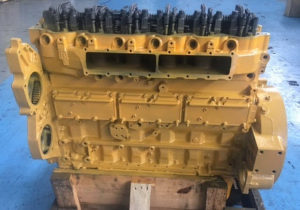 We can remanufactured a brand new CAT C7 Engine on an exchange basis meaning we build a new engine from a core. When we deliver your brand new engine you simply send us your old core back. We have a very fair core return policy. If the camshaft, crankshaft, cylinder head and block are reusable we will return 100% of your core charge. If some of the internal components are worn beyond repair we will pro rate your return.
We can remanufactured a brand new CAT C7 Engine on an exchange basis meaning we build a new engine from a core. When we deliver your brand new engine you simply send us your old core back. We have a very fair core return policy. If the camshaft, crankshaft, cylinder head and block are reusable we will return 100% of your core charge. If some of the internal components are worn beyond repair we will pro rate your return.
Our Longblock CAT C7 Engines include the cylinder block, complete cylinder head, crankshaft, pistons, liners, rings, connecting rods, camshaft, followers/lifters, intermediate cover, front gear timed group and complete gasket sets. Turbos, injectors, oil pumps and water pumps can also be ordered with the engine.
Repair & Return:
Repair and Return engines will follow the same procedure as remanufactured exchange engines however Capital Reman Exchange will rebuild the components provided by the customer. From time to time there are components that can not be remanufactured with the customer's engine. In instances where parts can't be remanufactured the cost of replacement parts or components will become the responsibility of the customer if they elect to replace them. There is no core charge associated with Repair & Return Engines.
- Save 47% On Average Over Dealers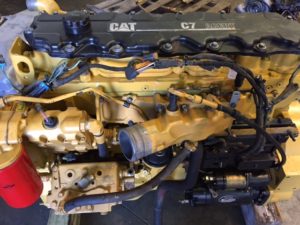 - Get Back To Work Quickly - We Don't Believe In Wasting Your Time- 88 Point Engine Quality Control Checklist- Built to Exact Manufacturer OEM Specs- Built With All ISO 9001 Certified New Parts- Industry Leading 1 Year Unlimited Warranty- Over 80 Years of Combined Engine Building Experience- AERA Certified Machine Shop and Engine Rebuild Facility- Fair Core Refund Policy- Worldwide Shipping- Same Day Shipping on Parts- Full Service Machine Shop and Engine Rebuild Facility-Manufactured In-House in Denver, CO
- Get Back To Work Quickly - We Don't Believe In Wasting Your Time- 88 Point Engine Quality Control Checklist- Built to Exact Manufacturer OEM Specs- Built With All ISO 9001 Certified New Parts- Industry Leading 1 Year Unlimited Warranty- Over 80 Years of Combined Engine Building Experience- AERA Certified Machine Shop and Engine Rebuild Facility- Fair Core Refund Policy- Worldwide Shipping- Same Day Shipping on Parts- Full Service Machine Shop and Engine Rebuild Facility-Manufactured In-House in Denver, CO
Call Capital Reman Exchange Today at 1-844-239-8101 For Immediate Caterpillar C7 Engine and Pats Sales or Service or Read Our FAQ Page to Learn More.

